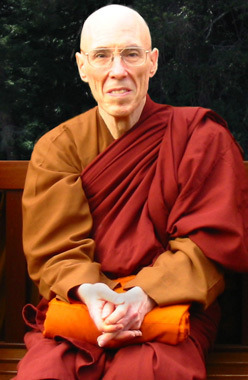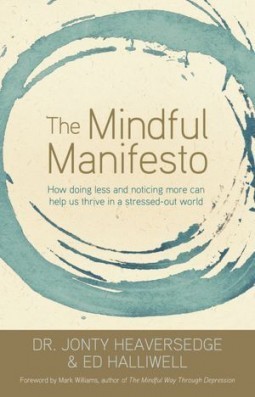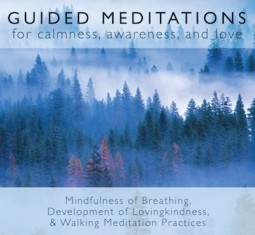Bodhipaksa's Blog, page 74
April 22, 2012
When murderers meditate…
 I wonder what kind of “meditation” Anders Breivik — who shot 69 people on an island in Norway last year, as well as killing another eight with a bomb — was doing?
I wonder what kind of “meditation” Anders Breivik — who shot 69 people on an island in Norway last year, as well as killing another eight with a bomb — was doing?
According to this report,
When prosecutors Friday asked Breivik whether he felt empathy for others, the killer said he taught himself to dull all emotions – “from happiness to sorrow, despair, hopelessness, anxiety, fear” through meditation.
It’s possible that Breivik was not doing anything resembling traditional Buddhist meditation, which encourages compassion and non-repression of emotions. I’d be 100 confident that Breivik was not practicing lovingkindness or compassion meditation!
Traditionally, meditation is only one part of the spiritual path, and it’s accompanied with an ethical code that strongly emphasizes non-harm. Stripped of this traditional context, there’s no guarantee that meditation alone will make someone a better person.
It’s also possible to practice meditation in an unbalanced way that results in an unhealthy form of emotional detachment and a kind of emotional deadening. Sangharakshita, my own teacher, has mentioned seeing some early western practitioners of the Burmese Satipatthana Method becoming very detached from their emotions and from their physical experience. This seems to have arisen from their having misunderstood the nature of the meditation practices they’d undertaken (or perhaps they had a bad teacher or teachers).
But meditation can be used quite deliberately in ways that are at odds with the Buddha’s teaching. It’s said that samurai warriors would practice meditation in order to quiet the mind and make them better warriors, so this use (or mis-use, from the perspective of the Buddha-Dharma) of meditation techniques would not be new.
I’d encourage all meditators to practice lovingkindness meditation as well as mindfulness practices, and to consciously practice the five Buddhist precepts of undertaking not to kill, take that which is not given, commit sexual misconduct, speak falsely, or indulge in intoxication.
April 17, 2012
With algorithms subtle and discrete / I seek iambic writings to retweet
I found on BoingBoing this website with an algorithm that finds random tweets that happen to be in iambic pentameter, and then assembles them into rhyming couplets. Or, as one might say:
Absurd, it is! Ah, yes but that’s the joy.
When twitter’s users sweet iambs employ
(Although it may not be the Real McCoy)
My heart cries out, “Pentameter ahoy!”?
Visit the Pentametron.
Related posts:
Are Mac users more likely to meditate?
I hear ancient Rome’s lovely this time of year
April 15, 2012
The best mindfulness apps for iPhone/iPad
Kate Crisp, director of the Prison Dharma Network, has done us great favor by downloading and testing 20 or so mindfulness apps for iPad or iPhone. Check out her review here.
April 14, 2012
April 13, 2012
Stepping into timelessness
 Sometimes in my meditation practice, time and space vanish.
Sometimes in my meditation practice, time and space vanish.
There are passages in the early Buddhist tradition that encourage us to let go of past and future, and to remain in the moment. For example, the following verse is found in the Bhaddekaratta Sutta:
You shouldn’t chase after the past
or place expectations on the future.
What is past is left behind.
The future is as yet unreached.
Whatever quality is present
you clearly see [vipassati] right there, right there.
Not taken in, unshaken,
that’s how you develop the heart.
In another verse, in the Attadanda Sutta in the very ancient Sutta Nipata, not clinging to past, present, or future is linked to letting go of our sense of selfhood.
What went before — let go of that!
All that’s to come — have none of it!
Don’t hold on to what’s in between,
And you’ll wander fully at peace.
For whom there is no “I-making”
All throughout the body and mind,
And who grieves not for what is not,
Is undefeated in the world.
For whom there is no “this is mine”
Nor anything like “that is theirs”
Not even finding “self-ness,” he
Does not grieve at “I have nothing.”
This implies that changing our perception of time (or our attitude to time) can help us to reduce our clinging to self. This makes experiences of timelessness very significant.
These experiences of timelessness in meditation are very hard to describe! It’s not the same as the phenomenon where “time flies when you’re enjoying yourself,” although it’s of course a good sign when this happens in our meditation practice.
In experiences of timelessness the entire concept of time seems to dissolve, and we find ourselves in an eternal present moment. The notion of the past and future is let go of, and we recognize that the present moment is all there is.
I’ve noticed in my own practice that a sense of timelessness is related to a changed perception of space. Here are some findings from science that help to explain the connection:
Researcher Andrew Newberg has found that in meditators who achieve a state of timelessness, there are two changes. There is, on the one hand, increased blood flow to the frontal lobes. These are associated with attention, and so this change corresponds to heightened mindfulness and focus. On the other hand, there is decreased blood flow to the left parietal lobe. This part of the brain is involved in visual-spatial orientation, which includes maintaining our orientation in physical space, judging distances, and keeping track of time. The decreased parietal activity suggests that these activities are winding down. This can result in the loss of a sense of distinction between inside and outside, bringing about an experience of non-duality, and also the experience of timelessness.
Related to this is a finding from neuroscience that involves the brain’s “default network” and “external network.” The default network is the anatomical system that the brain defaults to when it’s not engaged in external activity. It’s involved in self-monitoring, daydreaming, and reflecting. The external network comprises those parts of the brain that are active when we’re caught up in external activity, such as watching a movie. Normally these two systems are opposed to each other. If you’re thinking, you disengage from paying attention to external activity (e.g. you’re daydreaming in meditation and you don’t even notice where you are), and when you’re caught up in external activity you don’t particularly notice what’s going on internally (e.g. You’re typing on a computer and you don’t notice your neck’s getting stiff). In experienced meditators who do non-dual meditation, however, both networks are active at the same time. Both the inner and outer worlds are being monitored simultaneously.
In my practice, I’ve noticed that sustaining this dual awareness (inner and outer) leads to non-dual perception, and to an experience of timelessness.

Explore meditation with Bodhipaksa's Wildmind: A Step-by-Step Guide to Meditation
Dialing down activity in the parietal lobes seems to come about via a non-discriminating awareness of both “external” and “internal” sensations. (The quotes are because in a sense all sensation is internal, which is why we need the parietal lobes to tell us which are inside and which are outside.) So we’re activating both the default and the external networks of the brain, and it’s this that seems to shut down the parietal lobes and allow a sense of timelessness to come about.Timeless experiences are connected with what are often called the “formless jhanas,” which are four meditative states that in the Pali scriptures are called the “formless spheres.” (Only in the commentaries are they called jhanas.) These are states of meditation that are entered from a state of equanimity. They can be entered from fourth jhana, but also directly, without going through jhana. They are non-dual states of experience, where our sense of inner and outer, self and other, begin to fall away. And it’s in those states where a sense of timelessness can become particularly prominent.
In my own experience, the step from being in time to experiencing timelessness is connected with a change in my spatial relationship to time — not surprising if the parietal lobes, which are responsible for our sense of space and time, are going off-line.
Change our perception of space, and we change our perception of time. We tend to use spatial metaphors to express our relationship to time. So we have “time lines” on which the future is “forward in time” and the past is “back in time.” This is a metaphor we take very seriously. In fact studies have shown that if you ask someone to think about the future, they physically lean forward, while if you ask them to think about the past, they lean backward! And because we think about the past being like a place we have left and the future as being like a place we are about to visit, we think of the past and future as being like physically existent places. The concept of time travel seems natural to us (if not actually possible, for technical reasons) because we think of the past and future as being places we can actually visit.
I don’t know if the physicists agree with this, but the Buddha reminds us (and I concur), that only the present moment exists. Thus, time isn’t really a “line,” with the past behind us and the future in front. There is only this moment. But this moment is continually changing. In the phrase from the Bhaddekaratta Sutta that’s translated “Whatever quality is present you clearly see right there, right there,” the repetition of “right there” (tattha tattha) suggests to me this recognition that the present moment is here, but changing. It’s as if these words are saying, “look now” and “look now” and “look now” in response to the change. But the change is “right there”. We’re not looking anywhere but the present moment. Nothing in our experience is going anywhere
In my own experiences of timelessness time is no longer experienced linearly, as a journey from past to future. Instead, it’s experienced as an unfolding. The present moment is “right there, right there.” It’s not going anywhere. But it’s changing.
Rather than seeing things (an object, experiences, myself) as moving along a line from past to future, changing as they do so, I’ve seen things as remaining “on the spot” (right there!) with change unfolding from within. If you were to think of this in terms of the experience of, say, a rose blooming, in the linear way of seeing things we’d think of the blooming rose like this:
Rose bud > half-open bud > rose > withering rose > dead rose
Another way to see the rose changing is almost as if you were simply watching the rose from above. The rose isn’t going anywhere. It’s simply unfolding, from within. We simply have:
(((((rose)))))
with the parentheses representing the unfolding-from-within.
Intellectually, this may not sound like much. It may sound just like an idea — perhaps not even a very interesting one. But when applied to our experience, the results can be a profound shift — at least for a while — in how we experience ourselves and our world.
We let go of the past.
We let go of the future.
We simply be in the present moment, fully. It’s kind of like surfing the wave of the present moment…
We observe what’s in the present moment as it unfolds, according to its own nature, from within.
There is simply this eternally unfolding present moment.
There is just a timeless present.
There is nothing to grasp.
There is nothing to resist.
There is a profound sense of perfection, and of peace. The present moment cannot be anything other than it is, and so it’s accepted totally, without reservation or resistance. Everything is experienced as being perfect.
Every aspect of our experience — each sound, sight, smell, physical sensation from the body, feeling, thought, emotion — is seen as unfolding in this eternally unfolding present moment.
When memories arise, they are not seen as a window into the past, but simply phenomena emerging in the present (which is what they really are). And when we imagine things that may happen, this is not seen as a preview of the future, but again simply as thoughts arising right now.
There’s nowhere to be. Nothing to do. No one to be.
And everything is perfect.
Here’s a guided meditation that can help you move in the direction of experiencing timelessness (the quality isn’t great, since it’s from one of my Skype classes and not professionally recorded). Timelessness isn’t an experience that’s going to come about through one meditation. It takes repeated practice, and probably some time on retreat doing more intensive meditation. So try integrating some of the following pointers into your daily practice. In a few months, or years, you may find that you start to experience time in a very different way:
Bodhipaksa - Meditation on Timelessness
April 8, 2012
An interview with Bhikkhu Bodhi.
 You have lived in a forest monastery in Sri Lanka for many years, Bhante. What brings you to America?
You have lived in a forest monastery in Sri Lanka for many years, Bhante. What brings you to America?From Theravada-Dhamma:
I originally came to the U.S. to visit my father and sister. But for twenty-five years I have been afflicted with a chronic headache condition, which has resisted every type of treatment I have tried to date. My father suggested I arrange a consultation at The Headache Institute of New York, a clinic in Manhattan. Thus for the past few months I have been taking treatment at this clinic.
Is it true that you have decided to re-settle in this country?
I originally intended to stay in the U.S. only as long as necessary to treat the headache and then return to Sri Lanka. Over the past few months, however, two thoughts grew increasingly compelling in my mind: first, that I should be closer to my father in his old age; and second, that I might be able to contribute more to the Dhamma here in America than in Sri Lanka. At the beginning of this year I formally retired as editor for the Buddhist Publication Society, and thus I no longer felt obliged to reside in Sri Lanka.
Read more »
April 6, 2012
The Mindful Manifesto, by Dr. Jonty Heaversedge and Ed Halliwell
 The Mindful Manifesto presents — and represents — the continuing move of mindfulness practices into the mainstream of western culture. And mainstream it is. Almost daily, news articles appear highlighting the various ways that meditation is being taken up by ordinary people living ordinary lives, and used by veterans and trauma survivors, and adapted by clinicians to treat depression, stress, obesity, behavioral disorders in children, to give just a few examples. A constant stream of scientific papers appear from researchers, investigating — and confirming — meditation's ability to do everything from slowing cellular aging to promoting growth in the brain, to improving our sex lives.
The Mindful Manifesto presents — and represents — the continuing move of mindfulness practices into the mainstream of western culture. And mainstream it is. Almost daily, news articles appear highlighting the various ways that meditation is being taken up by ordinary people living ordinary lives, and used by veterans and trauma survivors, and adapted by clinicians to treat depression, stress, obesity, behavioral disorders in children, to give just a few examples. A constant stream of scientific papers appear from researchers, investigating — and confirming — meditation's ability to do everything from slowing cellular aging to promoting growth in the brain, to improving our sex lives.
The authors are Ed Halliwell, a writer who has contributed columns on meditation for the UK's Guardian newspaper, and Jonty Heaversedge, who is a family doctor who also presents on medical topics on television and radio. Halliwell is the main contributor, and his writing is clear and lively.
The Mindful Manifesto is both a guide — in very accessible language — to the practice of mindfulness, and a fascinating history of how the west has come to embrace meditation. The authors state their dual intensions in saying "we'd like to invite you to learn more about mindfulness, through an exploration of its history, philosophy, science, and practice. We'd like to invite you to see how it could make a difference — in your own life, and to our stressed-out world."
Title: The Mindful Manifesto: How Doing Less and Noticing More Can Help Us Thrive in a Stressed-Out World
Author: Dr. Jonty Heaversedge and Ed Halliwell
Publisher: Hay House
ISBN: 978-1-4019-3536-8
Available from: Hay House, Amazon.co.uk and UK Kindle Store, and Amazon.com and US Kindle store.
The authors say that their book is not a "manifesto" in the traditional sense of a grand plan for overhauling society, but behind that denial is a plainly visible (and quite natural) yearning for meditation to be more widely adopted. They imagine how different the world might be if politicians, for example, sat down to connect with their inner wisdom and compassion before discussions, or how healthcare might be transformed if every patient had access to meditation instruction. But there's no concrete plan. So in what sense is this book a manifesto? The word "manifesto" is used here more in the sense of "to make manifest" or "to show plainly" (the original meaning of the word) and stands for "an invitation to let go of doing, at least for a time, and learn how to be, right now, in the present moment." It also makes for a very catchy title.
So, how well do the authors succeed in their invitation, both to communicate how to be mindful, and to communicate meditation's history, philosophy, and science? I think they do remarkably well in both. As a long-time practitioner of meditation (thirty years this summer) I benefited from the freshness of the Manifesto's approach. The writers successfully translate the sometimes clunky and unappealing language of meditation ("delusion," "attachment") into more contemporary and accessible language ("denial, "addiction"). They take traditional Buddhist teachings, such as the Four Noble Truths and the Four Foundations of Mindfulness, and relate them to life as it's lived in the west. This is a very approachable book.
The authors present numerous examples and case histories, showing how meditation has actually benefitted ordinary people. They in fact regularly slip into the first person to offer accounts of how meditation has helped them with their own personal difficulties. These examples will no doubt help many people to recognize that meditation can benefit people like them. The book offers clear instructions for eight meditation practices. Some of these are traditional, such as mindfulness of breathing, while others, like an ice-cube meditation and Jon Kabat-Zinn's famous raisin experiment, are more contemporary. Of course it's not really possible to follow detailed meditation instructions from a book, but the site for the Mindful Manifesto does offer audio downloads (for an extra fee). It would have been good if these were available in a streaming format, or if a CD had been included with the book. Practitioners who have an established practice will probably benefit more from the written guidance, because it's easier to take on board "nuggets" and integrate them into what you already do than it is to read, digest, and remember whole paragraphs.
One omission that I think is unfortunate is that there's no lovingkindness instruction given. It's not that lovingkindness is absent from the book. Lovingkindness is mentioned in terms of having kindness and compassion to oneself, and is woven throughout every topic that's considered, but it's barely touched on in an explicit way. When it is mentioned by name, it's in the language of "self-parenting" as a way of developing emotional security. While this language is both contemporary and very useful (thanks, guys, I'll be stealing that phrase for use in my own teaching!) it's very much to do with "self-metta," which is only the first stage of lovingkindness practice. Lovingkindness techniques for enriching our connections with loved ones, developing more empathy for strangers, and overcoming antipathy — in other words the traditional format of lovingkindness meditation — would have made a valuable addition to The Mindful Manifesto.
The book is largely structured around a modified form of the Four Foundations of Mindfulness, which the authors render as mindfulness of body, mind, feelings, and life. These headings don't really match with the traditional understandings of the satipatthanas, but practically speaking the schema works well as an instructional tool. The approach throughout these chapters is very much rooted in science, and in the clinical applications of mindfulness, so that mindfulness of the body, for example, is treated very much in terms of dealing with painful sensations in the body, using approaches made popular in Mindfulness-Based Stress Reduction. The history of the development of such approaches is woven through this material, and is, to my mind, fascinating. Although a book on practicing mindfulness technically doesn't have to include the historical perspective, the techniques being explained are given an extra weight of authority when put in the context of their scientifically tested applications.
The section on the fourth foundation of mindfulness departs most from the traditional descriptions. Rather than "mindfulness of dhammas" (in my view best described as "a wise understanding of the workings of the mind") Heaversedge and Halliwell discuss "mindfulness of life." But although the treatment is non-traditional, it nevertheless performs a valuable service in showing how mindfulness, although it begins with a focus on our selves, can be applied to the way we interact with our world :"mindfulness takes us out of the limitations of self — by connecting us to a wider view, it shows us how we can fruitfully inter-relate with others."
I found The Mindful Manifesto to be a fascinating and enriching read. While beginners to mindfulness and meditation will undoubtedly benefit from read the book, it's probably even more valuable to the established practitioner, who will find the contemporary language to be helpful in seeing their practice with fresh eyes, and who will gain extra confidence from the reading about the many scientific studies that confirm in great detail the many ways in which meditation can help us be happier, healthier, and more engaged individuals.
March 31, 2012
Myth-busting the bodhisattvas
 Adam Savage, star of TV's popular Myth Busters, gave an impassioned speech at the recent Reason Rally in Washington, DC. At the conclusion of his talk he had the following to say:
Adam Savage, star of TV's popular Myth Busters, gave an impassioned speech at the recent Reason Rally in Washington, DC. At the conclusion of his talk he had the following to say:
I have concluded through careful, empirical analysis and much thought that somebody is looking out for me, keeping track of what I think about things, forgiving me when I do less than I ought, giving me strength to shoot for more than I think I'm capable of. I believe they know everything that I do and think and they still love me and I've concluded after careful consideration that this person keeping score is me. (Source)
This is very much the take I have on the bodhisattvas of the Mahayana. Some people evidently regard Avalokiteshvara, Tara, etc., as actually existing entities, qnd in fact in Tibetan Buddhism they've been coming to blows over whether one of these figures is in fact a force of good or otherwise. But to me they are symbolic archetypes through which experiences of compassion, wisdom, etc., can manifest themselves to us. To give a mild flavor of this, psychology experiments have shown that if someone is asked to thinking about a professor before they take a quiz, they perform better. The idea of a professor seems to help people get in touch with their own intelligence. Similarly, I believe, the archetypal bodhisattvas and Buddhas can help us get in touch with our own wisdom and compassion.

Check out Bodhipaksa's books, CDs, and MP3 guided meditations.
I've had bodhisattvas appear to me in my dreams, but I don't take that as a "visitation" from a actually existing entity. I've even had "communication" from bodhisattvas, but again I take that as being one part of my brain communicating with another through an imagined image and voice.As Roshi Bernie Glassman says, in Infinite Circle: Teachings in Zen, "Avalokitesvara Bodhisattva is the manifestation, or embodiment, of both prajna wisdom and compassion. Who is this Avalokitesvara Bodhisattva? It is nothing other than us, it is nothing other than who we intrinsically are … We must realize that Avalokitesvara is not separate — it's us!"
So I love Savage's reframing of the language of theism, and of the notion of "someone looking out for us." One reason for reflecting on, growing to love, and developing a devotional relationship to the bodhisattvas is that it makes it easer for us to hear from that part of us that is doing the looking out.
I'd recommend listening to the whole of Savage's talk. It's rather lovely.
March 27, 2012
"As a parent raises a child with deep love, care for water and rice as though they were your own children." Dogen
 So I was walking to the office the other day, when something rather lovely happened.
So I was walking to the office the other day, when something rather lovely happened.
Before I say what that was, I have to explain that walking to the office is a new thing for me — or the rediscovery of an old thing. Now before I entered a spell of working from home, I often used to make my morning "walking commute" into a walking meditation. Then, for several years, I did almost all of my work out of the house, and my daily walking meditation died away. But a couple of months ago I rented an office in town, only a 15 minute walk away, and I'm getting back into the habit of making my trip to the office into a meditation practice. I confess that it's been taking a bit of time for the habit to kick in again.
So I sallied forth from the house after my ritual farewell to the family (it really is a ritual — I have to give everyone a hug, a kiss, and a high five before I'm allowed to leave), and of course my mind immediately went onto a journey of its own, as I recalled recent events, thought about my schedule, planned projects I'm working on, and for good measure worried a little about finances. Not very mindful!
And then, I remembered that I was missing an opportunity to pay attention to my physical and mental experience. I was missing an opportunity to be mindful, to make walking to work into a meditation practice rather than the practice of allowing an endless proliferation of thoughts.
So I brought my awareness into the sensations of my body, and that's when the funny thing happened. It's something that's happened before, but every time it does happen it's wonderful. Suddenly, my walking meditation practice "clicked." And I found myself looking into my experience with pure, unconditional love. And then I realized that everything I needed in order to be completely fulfilled was contained within that present moment, and all I had to do was notice and appreciate it. Any thinking that I did was going to take me away from perfection, and why would I want to do that? And so my thinking pretty much ground to a halt. The odd thought would pop up, but I'd immediately realize that thinking compared to "just being" in the same way that eating chalk compares to eating cheesecake. One is rich and delightful, the other is dry and unsatisfying. So I just didn't have any desire to get caught up in thinking, and just stayed with the experience of observing sensations, feelings, emotions, and thoughts coming into being.
Until the "click" took place, I'd been observing my experience all right, but I'd been eating "chalk" rather than "cheesecake." My mindfulness had been a bit dry, a bit cold. Now was gazing with warmth into my experience. My gaze was appreciative, and it was responded to with a physical sense of delight. My body responded to this loving gaze by relaxing, and by releasing pleasant, tingling energy. And my heart responded with delight. It was as if, as I loved my experience, my experience loved me back.
I recognized this gaze. It's the way I look at my kids (on a good day). Both my children are still quite young. My daughter's five, and my son's three. And they're both very interesting characters, and very sweet (well, most of the time). I frequently find that when I look at them it's with a sense of warm, appreciative, unconditional love — and with wonder, too.
But I forget to do that with myself. I tend to be too task-oriented. I tend to be too concerned about what needs to be done. And I forget to love myself.
So this experience was a lovely reminder of the well-being that can come from giving myself loving attention. It was a welcome reminder that true wellbeing lies in valuing and surrendering to the present moment.
Dogen's saying is pointing to the same experience. His words come from advice written for monastery cooks, for whom working with rice and water was a mindfulness practice ("the mind which finds the Way actualizes itself through working with rolled up sleeves"). Being mindful of working with rice and water doesn't mean simply noticing your experience as you fill pots and stir ingredients. It means, Dogen says, imbuing every moment with a love as powerful as that of a parent for a child.
Right now I'm typing on a laptop, and gazing into my experience (my body, the screen in front of me, the keyboard) with love. And the present moment is complete, and fulfilling. That's my rice, my water. What's yours?
Postscript
The "quote" above is actually an adaptation of Eihei Dōgen zenji's words in Tenzo kyokun: Instructions for the Tenzo, translated by Yasuda Joshu Dainen Roshi and Anzan Hoshin Roshi, published in "Cooking Zen" (Great Matter Publications 1996).
A "motherly heart" is a heart which maintains the Three Jewels as a parent cares for a child. A parent raises a child with deep love, regardless of poverty or difficulties. Their hearts cannot be understood by another; only a parent can understand it. A parent protects their child from heat or cold before worrying about whether they themselves are hot or cold. This kind of care can only be understood by those who have given rise to it and realized only by those who practice it. This, brought to its fullest, is how you must care for water and rice, as though they were your own children.
March 16, 2012
When spiritual practice gets in the way of spiritual progress
 Spiritual practices are intended to help us free ourselves from self-clinging, but sometimes they can become subtle, or not-so-subtle ways to cling.
Spiritual practices are intended to help us free ourselves from self-clinging, but sometimes they can become subtle, or not-so-subtle ways to cling.
The Buddha said his teaching was a raft: something designed to help you get to the "other side." Once you arrive at the destination, it's pointless to hoist it onto your head or carry it on your back. But sometimes even before we get to the other side, we find ourselves overly attached to the raft. It's as if we push the raft half-way into the water, but don't quite launch it. And then we get quite proud of the fact that we've constructed such a beautiful raft. And maybe we spend a lot of time tweaking the raft, so that it's going to be nice and comfortable for the journey. Or we have a little snooze on it. Or maybe we look around at other designs of rafts and wonder whether our raft is good enough; maybe we need to spend a bit more time checking out various raft designs before we commit ourselves to crossing over?
"And what should the man do in order to be doing what should be done with the raft? There is the case where the man, having crossed over, would think, 'How useful this raft has been to me! For it was in dependence on this raft that, making an effort with my hands & feet, I have crossed over to safety on the further shore. Why don't I, having dragged it on dry land or sinking it in the water, go wherever I like?' In doing this, he would be doing what should be done with the raft. In the same way, monks, I have taught the Dhamma compared to a raft, for the purpose of crossing over, not for the purpose of holding onto."
So we end up clinging to the raft, and not using it for its intended purpose. Take a simple practice like bowing. This is, in essence, a simple act of paying respect. "Clinging" to a practices like bowing might involve trying to get more out of it than it can actually offer, because your sense of self depends upon it. So you might get very caught up in "doing the bowing just right" as if the exact performance of the act of bowing inherently makes a difference, irrespective of the spirit with which it's done. "Doing it right" becomes a matter of getting the physical act correct rather than the inner act of reverence and mindfulness.

If you like Bodhipaksa's writing, check out his books, CDs, and MP3 guided meditations.
We often, in fact, mistake a kind of self-critical judging of actions as being a kind of mindfulness. And this becomes an "other-critical" judging of actions as well, so that we look down on others for not following the rules. This is the opposite of the point of practice, which is to lessen our attachment to a sense of self. Non-attached bowing is simply a non-selfconscious act of showing respect. It's done mindfully and in a positive frame of mind. And there's no judging or competition involved.
Sometimes, people have negative clinging, or aversion, to a practice like bowing. It reminds us of self-abasement and monarchical political systems, and the ego feels threatened. But of course bowing in a Buddhist context is just the equivalent of shaking hands respectfully in a western context.
Before we go any further, though, I'm not really talking about bowing. That's just an example of a practice we can take as being an end in itself. Any practice can be misused in this way. Buddhist ethics, for example, is about taking responsibility for your own actions. But what's the first thing that happens, often, when the question of ethics and precepts comes up in a discussion class? People start offering up examples of how other people don't follow the precepts. This totally misses the point, and rather than helping us to let go of our self-clinging, it does the opposite, but allowing us to convince ourselves that we're fine, and that it's other people that are the problem.
So here are some examples of how we can sometimes use meditation in ways that reinforces self clinging:
we could for example be overly concerned about whether we're doing the practice right
or we could be convinced that we are in fact doing the practice right (and others aren't)
or we could invest a lot of energy in insisting that there's only one right way to meditate (which, coincidentally, is the way we've learned to meditate)
or we could be doing the practice in a mechanical and half-hearted way that lacks genuine openness, curiosity, and investigation
or we could be attached to particular meditative experiences so that our meditation practice keeps us in place rather than takes us forward
or we could think that the amount of time we spend on the cushion is more important than the quality of what we do
there might be a lot of emphasis on "doing" in meditation and not enough on "receptivity"
there could be an emphasis on being mindful in meditation that we drop as soon as the final bell rings for the meditation
there could be excessive pride involved in our practice
we might be continually looking for a "new, improved" form of practice, because we think it's the tool that's going to make the difference, rather than the degree of skill with which we use it.
Confession: I've done all of these things!
Actually, it's inevitable that we'll do these sorts of things. It's in the nature of the unenlightened mind that we cling — that we look for security and safety and try to stick to the known. In fact we're doing this most of the time, in one way or another. What we can do, though, is to set up conditions so that we're more likely to go deeper, and to find that spontaneous occurrences of "letting go" happen.
Mainly, I think, it's the quality of attention that we bring to any practice that makes it genuinely useful. The main qualities that we can cultivate that allow for spontaneous experiences of letting go to occur include:
Humility: Recognizing that we have a long way to go in our practice, and that there are infinite depths to explore compared to the shallows that we know from our current experience.
Curiosity: What's going on here? How does this work? What happens if I try this, instead of that? Being prepared to step outside of the known is hugely enriching to our practice.
Kindness: Being a friend to yourself helps your experience to unfold. Treat every experience as a welcome guest with an interesting story to tell, and you'll find that you learn more. Treating experiences as unwelcome guests is a good way to shut your experience down.
Receptivity: Don't be one-sidedly concerned with doing in your meditation practice. When you are doing something — anything — be aware of what effect it's having. But sometimes you need to remember just to be.
Wonder: If you think you know what it means to be human, you don't know what it means to be human. Because no one knows. Life is a mystery. Experience is a mystery. Allow yourself to feel wonder.
Respect: The Buddha emphasized the importance of the wise friend — the person who is further along the path than we are. Yes, we do need to question authority, but we also need to respect the wisdom and compassion that others have developed.
Appreciation: The unappreciative mind is starved of joy and learns little. When we appreciate the simplest things about our lives — the fact that we can breathe, and be conscious, and that the universe supports our existence — then every experience becomes an opportunity to explore. The appreciative mind is open and ready to embrace change.
There's no way to guarantee that our practice isn't going to be a hindrance to spiritual progress, and as I've said it's inevitable that it will at time, but these qualities, as well as an awareness of the dangers of using our practice to bolster self-clinging rather than abandon it, can help us to push our rafts into the water, where they belong.



